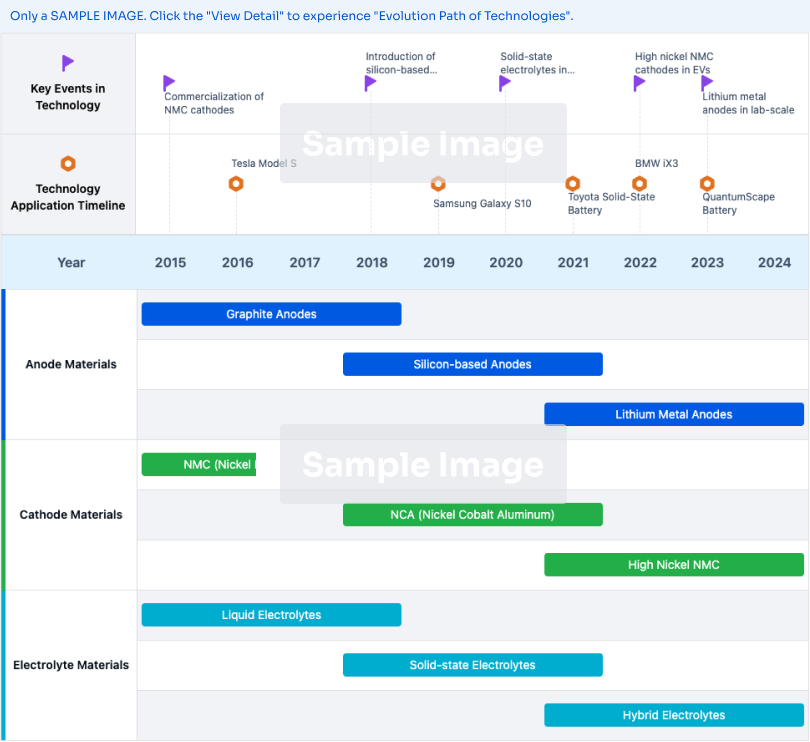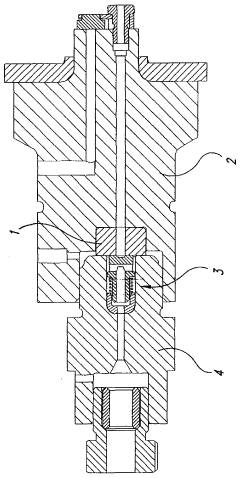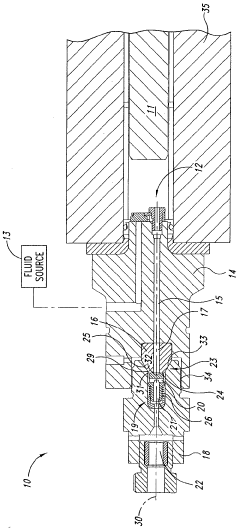Improving The High Yield Of Check Valves
Technology Background And Goals
A thorough understanding of customer needs, application scenarios, and market segmentation is crucial. Factors such as industry regulations, technological advancements, and economic conditions should be considered to provide insights into the market dynamics and growth opportunities. Additionally, an analysis of the target customer base, their preferences, and purchasing behaviors will aid in developing effective marketing strategies.
Check Valve Market Demand Analysis
- Market Size and Growth
The global check valve market is expected to witness significant growth, driven by increasing demand from industries like oil and gas, chemical processing, and power generation. Factors such as infrastructure development, urbanization, and the need for efficient fluid control systems contribute to market expansion. - Industry Trends
Key trends shaping the check valve market include the adoption of advanced materials for improved durability and corrosion resistance, the integration of smart technologies for remote monitoring and predictive maintenance, and the demand for compact and lightweight designs to optimize space utilization. - Application Sectors
Check valves find widespread applications across various sectors, including:- Oil and Gas: Used in pipelines, refineries, and offshore platforms for controlling fluid flow and preventing backflow.
- Chemical Processing: Essential for regulating the flow of corrosive and hazardous materials.
- Power Generation: Employed in steam systems, cooling water circuits, and condensate lines.
- Water and Wastewater Treatment: Utilized in pumping stations and distribution networks.
- Regional Dynamics
The Asia-Pacific region is expected to be a significant market for check valves, driven by rapid industrialization and infrastructure development in countries like China and India. North America and Europe also hold substantial market shares due to established industries and stringent regulations.
Technology Status And Challenges
- Valve Failure Modes
Common failure modes of check valves include wear, corrosion, erosion, and fouling, leading to leakage, sticking, or complete failure. - Material Limitations
Existing valve materials may not withstand harsh operating conditions, such as high temperatures, pressures, or corrosive environments. - Design Constraints
Conventional check valve designs face challenges in achieving high reliability, low pressure drop, and compact size simultaneously. - Flow Dynamics
Complex flow patterns, turbulence, and fluid-structure interactions can cause vibrations, noise, and premature valve failure. - Maintenance Challenges
Inaccessible locations, lack of condition monitoring, and difficult disassembly hinder effective maintenance and repair.
Technology Evolution Path

Current Technical Solutions
01 Spring-loaded Closure Mechanism
These valves utilize a spring-loaded mechanism to ensure proper closure and prevent backflow. The spring keeps the valve closed, and fluid pressure in the forward direction overcomes the spring force to open the valve, allowing for reliable and efficient operation in high-pressure applications.- Spring-loaded Closure Mechanism: These valves utilize a spring-loaded mechanism to ensure proper closure and prevent backflow. The spring applies force to keep the valve closed until sufficient forward pressure opens it, allowing flow in the desired direction, ensuring reliable operation and high yield.
- Guided Valve Element: These valves feature a guided valve element, such as a piston or disc, that moves along a defined path to open and close. The guided design ensures smooth operation, reduces wear, and improves lifespan, contributing to high yield.
- Lightweight Valve Element: These valves incorporate a lightweight valve element, like a ball or disc, that can respond quickly to changes in flow direction. The reduced mass allows for faster opening and closing, improving flow efficiency and yield.
- Integrated Sealing Mechanism: These valves feature an integrated sealing mechanism, such as a resilient seal or gasket, that ensures tight closure and prevents backflow. The sealing mechanism enhances reliability and contributes to high yield by minimizing leakage.
- Compact and Lightweight Design: These valves are designed to be compact and lightweight, making them suitable for applications where space and weight are critical factors. The compact design allows for efficient installation and reduces system footprint, contributing to high yield in various applications.
02 Tilting Disc Design
These valves feature a tilting disc that pivots to open and close. The disc tilts or swings open when fluid flows in the forward direction and closes when the flow reverses, offering low resistance to flow and handling high flow rates.03 Guided Piston or Plunger Mechanism
These valves incorporate a guided piston or plunger mechanism that moves linearly to open and close. The piston or plunger is guided by a cylindrical bore or sleeve, ensuring smooth and precise operation, suitable for high flow rates and pressures.04 Lightweight or Low-friction Components
These valves are designed with lightweight or low-friction components to minimize resistance and improve responsiveness. Materials like plastics or lightweight metals may be used to reduce the inertia of moving parts, allowing for faster opening and closing times.05 Integrated Sensors or Monitoring Systems
Some valves incorporate integrated sensors or monitoring systems to track valve performance and detect potential issues. These systems may monitor parameters like flow rate, pressure, or valve position, providing valuable data for maintenance and troubleshooting.
Technology Main Player Analysis
Halkey-Roberts Corp.
Flow International Corp.
Key Technology Interpretation
- The check valve has a frustoconical end region and a tapered mating surface that securely fits within the outlet check valve body, improving the sealing and extending the fatigue life.
- The check valve seat is biased against an end surface by a spring and external pressure, ensuring a secure sealing and preventing leakage.
- The poppet design allows pressurized fluid to flow through the check valve seat when the pressure is sufficient to overcome the biasing force, enabling efficient and controlled fluid flow.
Check Valve High Yield Improvement Economic Analysis
The economic analysis of improving the high yield of check valves is a crucial aspect to consider. Check valves are widely used in various industries, and their reliable performance is essential for efficient and safe operations. A high yield in the manufacturing process can significantly reduce production costs, increase profitability, and improve competitiveness.
The potential economic benefits of achieving a higher yield in check valve production include reduced material waste, lower labor costs, increased throughput, and improved asset utilization. Additionally, a consistent high yield can lead to better quality control, fewer defects, and enhanced customer satisfaction, ultimately strengthening the market position and brand reputation of the manufacturer.
Check Valve High Yield Improvement Policy And Regulatory Impact
Stringent quality standards and regulations govern the production and performance of check valves, particularly in critical sectors like energy, petrochemicals, and aerospace. Compliance with these regulations is mandatory to ensure product safety and reliability. However, some regulations may inadvertently hinder innovation or impose excessive costs, potentially affecting yield rates. A balanced approach that promotes safety while fostering innovation is crucial for achieving high yields.
Additionally, government policies and incentives can play a significant role in driving research and development efforts aimed at improving check valve yields. Initiatives such as tax credits, research grants, or public-private partnerships can stimulate technological advancements and encourage manufacturers to invest in yield-enhancing processes and technologies.









